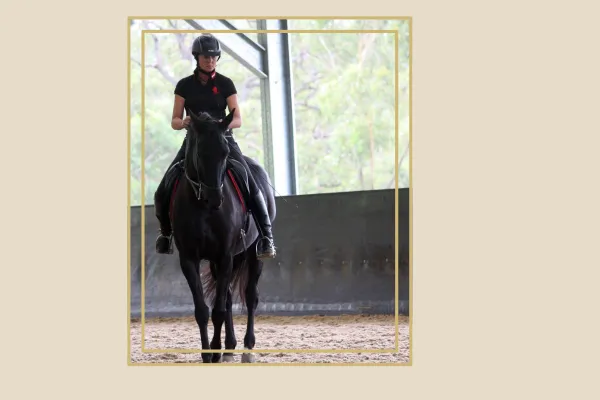
Riding in Harmony
Without balance, neither horse nor rider can perform effectively. Balance builds body awareness and enables both partners to develop strength, coordination, and precision, forming the foundation of all training.
Investing in Balance and the Integrated Seat
Achieving true harmony takes time, patience, and consistent effort. For the rider, it means developing an integrated seat—a coordination of the upper and lower body, paired with soft hands. For the horse, it involves improving balance, core strength, and suppleness.
Here’s why it’s worth the effort:
Horses and humans both need to work through imperfections, building coordination, timing, and core stability together.
Relaxation is essential. Staying grounded, calm, and confident—both physically and mentally—fosters trust and progress.
Less is more. By slowing down and becoming aware of your body, you can achieve maximum results with minimum effort.
Training is an ongoing process with countless "aha" moments along the way. Those moments when everything clicks—the timing, the movement, the ease—make the journey rewarding.
The Elements of Balance
A balanced rider with a light seat allows the horse to move freely, even on a curved line. This requires attention to:
Core strength, stability, and suppleness
Adjusting tempo and regularity
Aligning left to right and front to back
At the same time, we work to remove blockages and maintain a seamless flow of movement. Easy, right?
Tips for Riders:
Work evenly. Avoid overloading one side and creating strain.
Focus on alignment. Continuously adjust yourself to stay balanced and in harmony with your horse’s movement.
Develop supple hips and pelvis. This enables your body to move as a coordinated yet independent unit.
Seek timing and flow. With steady practice, movement patterns begin to work as a unit, and everything clicks.
Subtle adjustments—a lift of your hips, a rotation of your upper body, or a light step into a stirrup—can make a big difference. When done with finesse, the horse softens beneath you, creating a flowing, harmonious partnership.
The Benefits of Balance
The rewards of balance are transformational:
For the Horse:
A softer, more relaxed outline
Reduced tension in the poll and neck
Smoother, more confident gaits
Fewer stumbles and injuries
For the Rider:
A lighter, more intuitive connection
Less physical strain
A horse that moves willingly and playfully
The less effort it takes, the more effortless it looks. When horse and rider are truly in sync, their harmony is undeniable.
Patience Pays Off
Rigid horses and riders often end a session exhausted. In contrast, taking the time to loosen up, align, and balance leads to softness and mutual ease. The quality of movement improves, and both horse and rider finish on a positive note.
Of course, every horse and rider has a better side. It’s tempting to favor the easier direction, but perseverance pays off. Over time, your horse will suggest fewer shortcuts and approach work with a happier, more playful attitude.
The Priceless Reward
One of the greatest compliments is hearing a student say:
“My horse is happy to go in the arena and looks content.”
That happiness and partnership make all the effort worthwhile.
